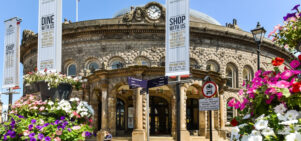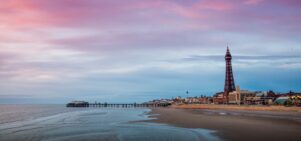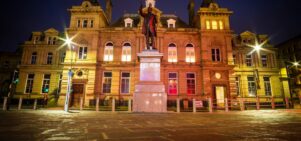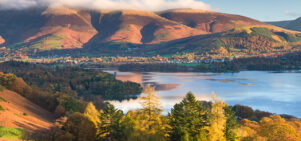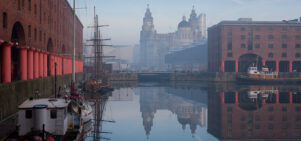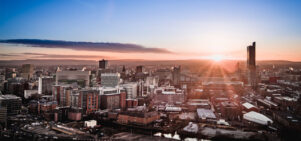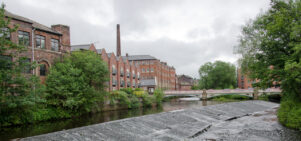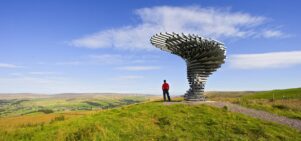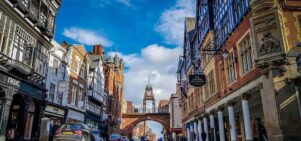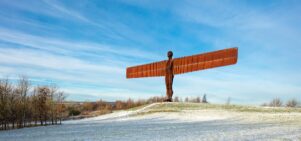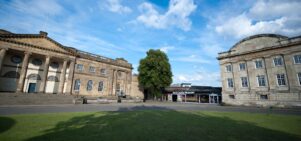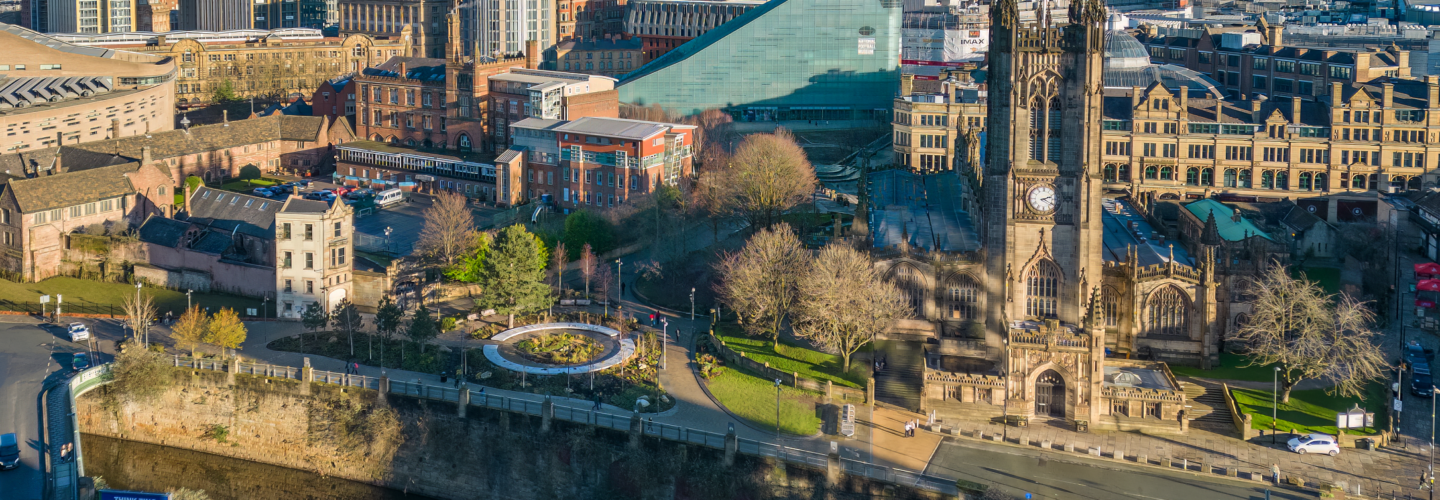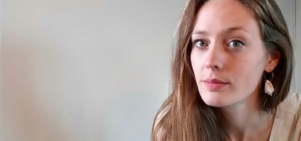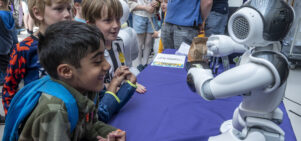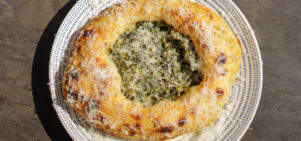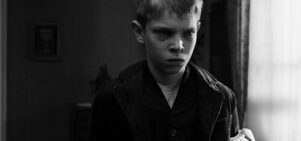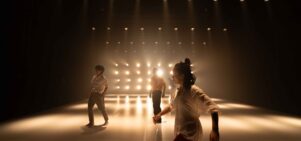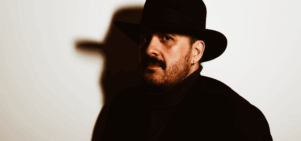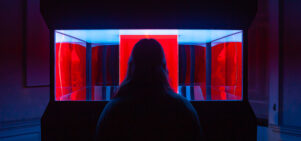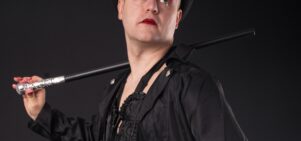Street art & the sadhu: We present Sheffield’s Alex Ekins
Susie StubbsSheffield knows how to do good street art – we talk to one of its resident graffiti artists to find out more about his work.
Sheffield is a city singularly unafraid of decorating its buildings with unusual adornments. From Faunagraphic’s house-high portrait of Sir David Attenborough to massive murals, on-street poetry and Mila K’s horror film-influenced spray art, this is a city that announces its intention to be irreverent the second you step outside the mainline station. And it drives the point home with a collection of street art so prolific that it would make your average street cleaner take exhaustion-induced early retirement.
Alex Ekins is one such graffiti artist. He came to our attention thanks to a series of paste-up works we spotted in November on the side of Bloc Projects on Sylvester Street. “We are lucky in Sheffield that we have so many locals working to a very high standard – internationally respected artists such as Phlegm, Kid Acne, Faunagraphic and Florence Blanchard,” said Ekins of the street art scene in the city. “There’s a healthy mix of art that’s technically illegal alongside officially sanctioned and commissioned work.”
“People pass by & whisper approval, they seem to enjoy sharing in a minor deviancy”
It is this community of like-minded street art souls that gave Ekins the confidence to create Seven Sadhus, a project for which he photographed a series of Nepalese holy men, “a group of people who have chosen to give up work, materialism and the trappings of modern society.” Ekins had already been taking pictures of sherpas working at the Everest base camp, but after befriending a sadhu in Kathmandu he switched his focus and took their portraits instead. “Back in the UK, I wanted to introduce them into an alien, urban landscape and presenting them cut-out and at life-size seems to have had the most impact.”
The resulting paste-ups were dotted around the city centre, the striking portraits in stark contrast to their fragile, messy, paper-and-paste means of exhibition. Most have subsequently been ripped down, though Ekins takes their destruction on the chin. “The responses I receive from the public while I’m in process of pasting up a sadhu are very positive. People pass by and whisper their approval, I don’t know why they whisper, but they do seem to enjoy sharing in a minor deviancy.”
As the process involved in the creation of these works suggests, Alex Ekins’ work is about more than chasing the illicit thrill of pasting up unofficial artworks. He studied photojournalism, got into climbing and made a name for himself in “adventure photography” before turning his hand to street art. “My work was always about people interacting with unwelcoming circumstances,” says Ekins. “And now my practice often looks at people on the margins of society and how they might interact with new or hazardous environments. I like the idea of people going where perhaps society doesn’t want them to be.” He seems unaware of the parallels between the people he photographs and his own life as a street artist.
“Society wants us all to become homogenised and bland, and then we become suspicious of difference. It’s the fear of the other. The sadhus demonstrate that there are countries and cultures that offer their citizens accepted alternatives to rampant consumerism. From birth we are encouraged and coerced to work, consume and conceive, but the life of a sadhu is contrary to these received norms,” argues Ekins. It’s an interesting thought, particularly at this time of year: these are portraits of men out of time and out of place, yet despite their otherness they feel perfectly at home on Sheffield’s rain-lashed streets.
The sadhus may be working the walls of the city now, but Ekins is already considering his next project. “I’d like to do something with the Everest base camp pictures,” he says. “’Sherpas in Sheffield’ sounds quite nice, doesn’t it?” Whatever his decision, we will watch his future work, and that of his graffiti contemporaries, with interest: the steel city has never looked quite so colourful.

